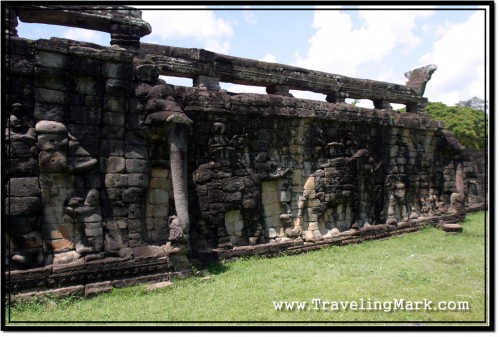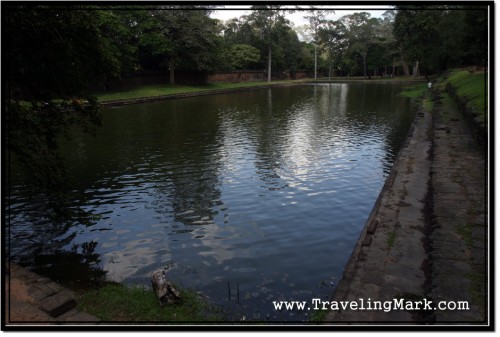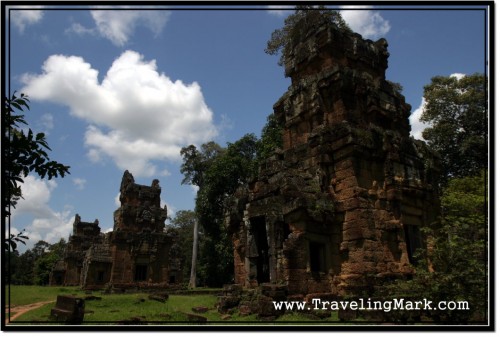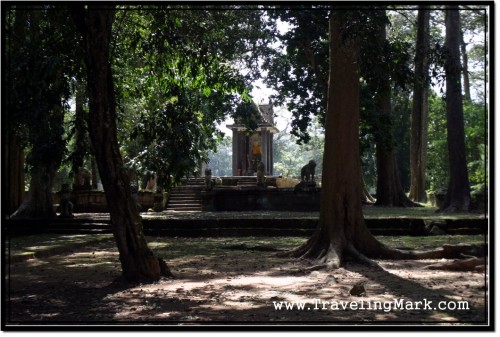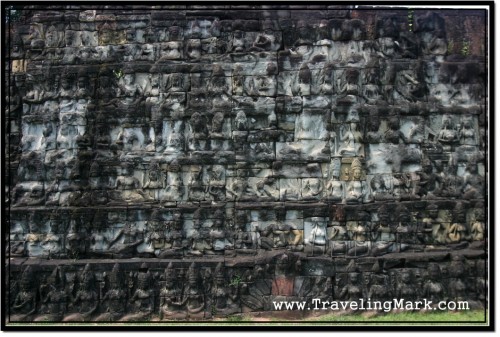Terrace of the Elephants is located immediately to the north of Baphuon. This 300 meters long, 2.5 meters tall stone terrace represents the front of the Royal Palace area, including the Phimeanakas temple and the Sras Srei water reservoir. If you follow the road leading towards the North Gate from the Bayon temple, you will have the Terrace of the Elephants span for over 300 meters along the road on your left hand side. There are five stairways leading up to the terrace, with central stairway being in line with the Victory Way – the road connecting the Royal Palace area with the Victory Gate. Two smaller stairways exist on either side of the central stairway and two more are at either end of the terrace.
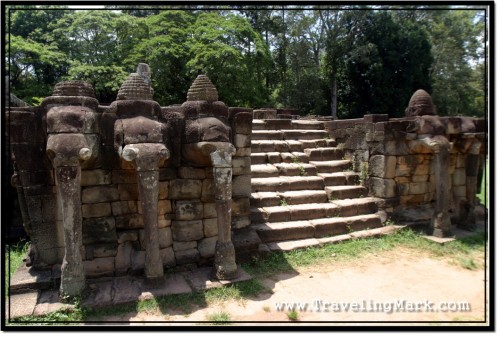
The original name of the terrace is unknown, however the reason why it’s been referred to as the Terrace of the Elephants becomes clear as soon as one comes close to it. The walls are covered with carvings of elephants and side stairways are flanked by three-headed elephants with trunks pulling lotus flowers, similar to those found on the South Gate to Angkor Thom.
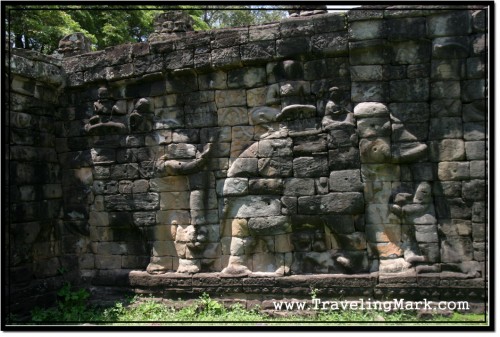
Front end wall is for the most part covered in carvings containing hunting scenes with elephants. The sections of the wall between the central stairway and its small side stairways is covered with garudas – mythical bird men known as the vehicles of Hindu god Vishnu, also known for being the mortal enemies of nagas, the seven headed serpents representing rainbows. Alongside garudas, these small sections of walls contain figures of men with lion heads. Both garudas and lion-headed figures are sculpted with their hands raised above their heads and are alternating along the wall.
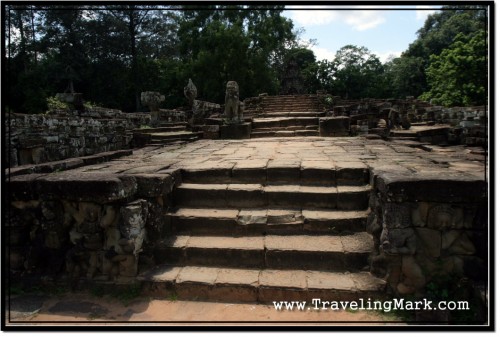
I got to the Terrace of the Elephants in the early afternoon but because the terrace faces east, I had all the front end carvings as well as the three-headed elephants blackened by the shade. Terrace’s orientation clearly suggests that the best time to visit it is in the morning or anytime before noon – that’s if you want to catch it in the best lighting for photography.
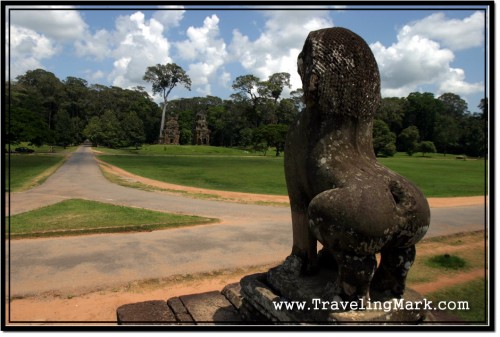
I climbed the central staircase to get on top of the Terrace of the Elephants where balustrades containing naga heads and guardian stone lions decorate the space. This was my access point to the rest of the Royal Palace area including an ancient temple of Phimeanakas, the Sras Srei pond, Preah Palilay and Tep Pranam. I walked back along the north side of the Royal Palace to get to the road where I accessed the Terrace of the Leper King.
There are some fine carvings on the north wall of the Terrace of the Elephants, including the carving of a five headed horse the mythical origins of which are unknown, but the pictures of this one is one of the few I was unable to recover from the formatted memory card after my laptop was stolen.
